
Mastering Scala Machine Learning
¥90.46
Advance your skills in efficient data analysis and data processing using the powerful tools of Scala, Spark, and Hadoop About This Book This is a primer on functional-programming-style techniques to help you efficiently process and analyze all of your data Get acquainted with the best and newest tools available such as Scala, Spark, Parquet and MLlib for machine learning Learn the best practices to incorporate new Big Data machine learning in your data-driven enterprise to gain future scalability and maintainability Who This Book Is For Mastering Scala Machine Learning is intended for enthusiasts who want to plunge into the new pool of emerging techniques for machine learning. Some familiarity with standard statistical techniques is required. What You Will Learn Sharpen your functional programming skills in Scala using REPL Apply standard and advanced machine learning techniques using Scala Get acquainted with Big Data technologies and grasp why we need a functional approach to Big Data Discover new data structures, algorithms, approaches, and habits that will allow you to work effectively with large amounts of data Understand the principles of supervised and unsupervised learning in machine learning Work with unstructured data and serialize it using Kryo, Protobuf, Avro, and AvroParquet Construct reliable and robust data pipelines and manage data in a data-driven enterprise Implement scalable model monitoring and alerts with Scala In Detail Since the advent of object-oriented programming, new technologies related to Big Data are constantly popping up on the market. One such technology is Scala, which is considered to be a successor to Java in the area of Big Data by many, like Java was to C/C++ in the area of distributed programing. This book aims to take your knowledge to next level and help you impart that knowledge to build advanced applications such as social media mining, intelligent news portals, and more. After a quick refresher on functional programming concepts using REPL, you will see some practical examples of setting up the development environment and tinkering with data. We will then explore working with Spark and MLlib using k-means and decision trees. Most of the data that we produce today is unstructured and raw, and you will learn to tackle this type of data with advanced topics such as regression, classification, integration, and working with graph algorithms. Finally, you will discover at how to use Scala to perform complex concept analysis, to monitor model performance, and to build a model repository. By the end of this book, you will have gained expertise in performing Scala machine learning and will be able to build complex machine learning projects using Scala. Style and approach This hands-on guide dives straight into implementing Scala for machine learning without delving much into mathematical proofs or validations. There are ample code examples and tricks that will help you sail through using the standard techniques and libraries. This book provides practical examples from the field on how to correctly tackle data analysis problems, particularly for modern Big Data datasets.
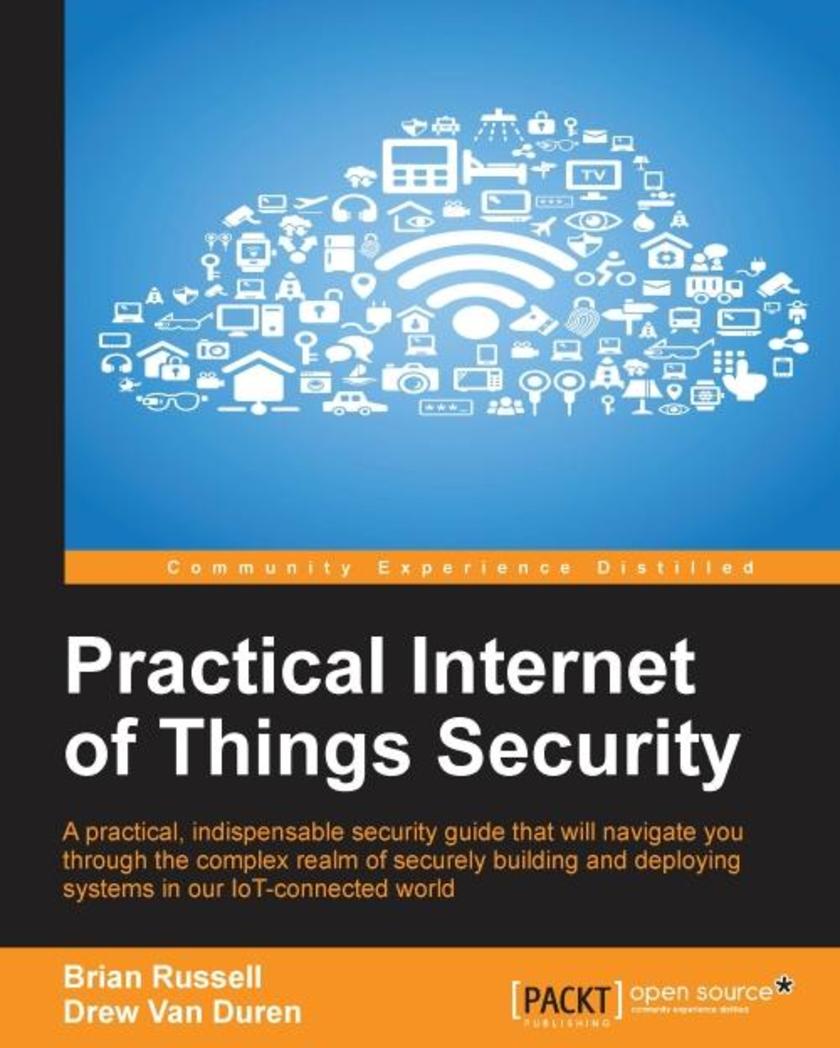
Practical Internet of Things Security
¥80.65
A practical, indispensable security guide that will navigate you through the complex realm of securely building and deploying systems in our IoT-connected world About This Book Learn to design and implement cyber security strategies for your organization Learn to protect cyber-physical systems and utilize forensic data analysis to beat vulnerabilities in your IoT ecosystem Learn best practices to secure your data from device to the cloud Gain insight into privacy-enhancing techniques and technologies Who This Book Is For This book targets IT Security Professionals and Security Engineers (including pentesters, security architects and ethical hackers) who would like to ensure security of their organization's data when connected through the IoT. Business analysts and managers will also find it useful. What You Will Learn Learn how to break down cross-industry barriers by adopting the best practices for IoT deployments Build a rock-solid security program for IoT that is cost-effective and easy to maintain Demystify complex topics such as cryptography, privacy, and penetration testing to improve your security posture See how the selection of individual components can affect the security posture of the entire system Use Systems Security Engineering and Privacy-by-design principles to design a secure IoT ecosystem Get to know how to leverage the burdgening cloud-based systems that will support the IoT into the future. In Detail With the advent of Intenret of Things (IoT), businesses will be faced with defending against new types of threats. The business ecosystem now includes cloud computing infrastructure, mobile and fixed endpoints that open up new attack surfaces, a desire to share information with many stakeholders and a need to take action quickly based on large quantities of collected data. . It therefore becomes critical to ensure that cyber security threats are contained to a minimum when implementing new IoT services and solutions. . The interconnectivity of people, devices, and companies raises stakes to a new level as computing and action become even more mobile, everything becomes connected to the cloud, and infrastructure is strained to securely manage the billions of devices that will connect us all to the IoT. This book shows you how to implement cyber-security solutions, IoT design best practices and risk mitigation methodologies to address device and infrastructure threats to IoT solutions. This book will take readers on a journey that begins with understanding the IoT and how it can be applied in various industries, goes on to describe the security challenges associated with the IoT, and then provides a set of guidelines to architect and deploy a secure IoT in your Enterprise. The book will showcase how the IoT is implemented in early-adopting industries and describe how lessons can be learned and shared across diverse industries to support a secure IoT. Style and approach This book aims to educate readers on key areas in IoT security. It walks readers through engaging with security challenges and then provides answers on how to successfully manage IoT security and build a safe infrastructure for smart devices. After reading this book, you will understand the true potential of tools and solutions in order to build real-time security intelligence on IoT networks.
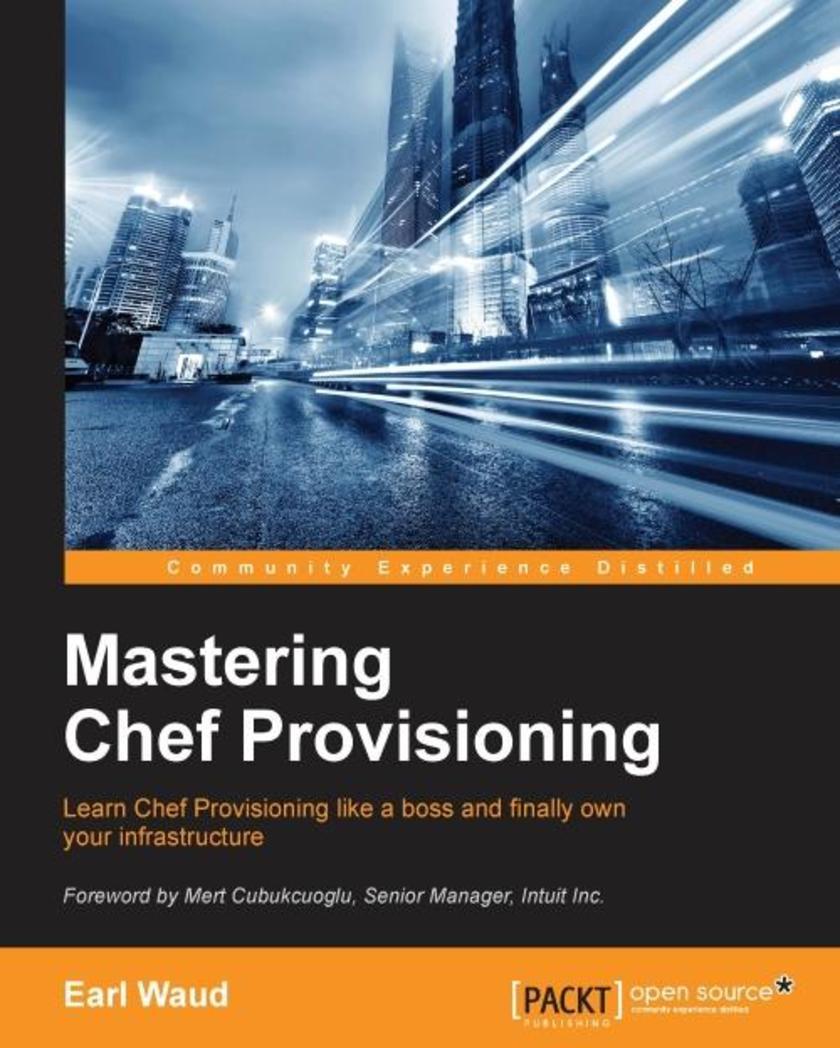
Mastering Chef Provisioning
¥71.93
Learn Chef Provisioning like a boss and finally own your infrastructure About This Book This is the first Chef book focused on provisioning infrastructure as its sole task. The book offers a clear solution to a specific pain point: learn to make your system work faster. Learning better approaches to load balancing and parallelization with this book will save you time By mastering the techniques in this book, you will know how to run an entire fleet of machines without breaking a sweat This book is more helpful than the documentation ( https://docs.chef.io/provisioning.html), with a stronger guiding voice and clearer explanations and use cases Who This Book Is For This book is for Software Engineers, System Administrators, or DevOps Engineers who need to quickly deliver reliably consistent infrastructure at scale. You are expected to have intermediate experience with Chef and Ruby and will be reading this book to advance your knowledge and take your skillset to the next level. What You Will Learn Use best practices to describe your entire infrastructure as code Automate and document every aspect of your network, from the hardware of individual nodes to software, middleware, and all containers and clouds Create a perfect model system Make the best possible use of your resources and avoid redundancy Deliver on the promise of Infrastructure as Code Scale with ease by properly provisioning their infrastructure Use the best Test Driven Development methodologies In Detail This book will show you the best practices to describe your entire infrastructure as code. With the help of this book you can expand your knowledge of Chef because and implement robust and scalable automation solutions. You can automate and document every aspect of your network, from the hardware to software, middleware, and all your containers. You will become familiar with the Chef’s Chef Provisioning tool. You will be able to make a perfect model system where everything is represented as code beneath your fingertips. Make the best possible use of your resources, and deliver infrastructure as code, making it as versionable, testable and repeatable as application software Style and approach By dedicating a whole book solely to the question of provisioning, this book will teach administrators to use Chef as a birds-eye lens for their entire system. It will moves you away from the specifics of each machine and its automations and instead will teach you them how to approach the entire cluster as something different than the sum of its parts. By focusing on infrastructure as code as its own project, the book offers elegant, time-saving solutions for a perfectly described and automated network.
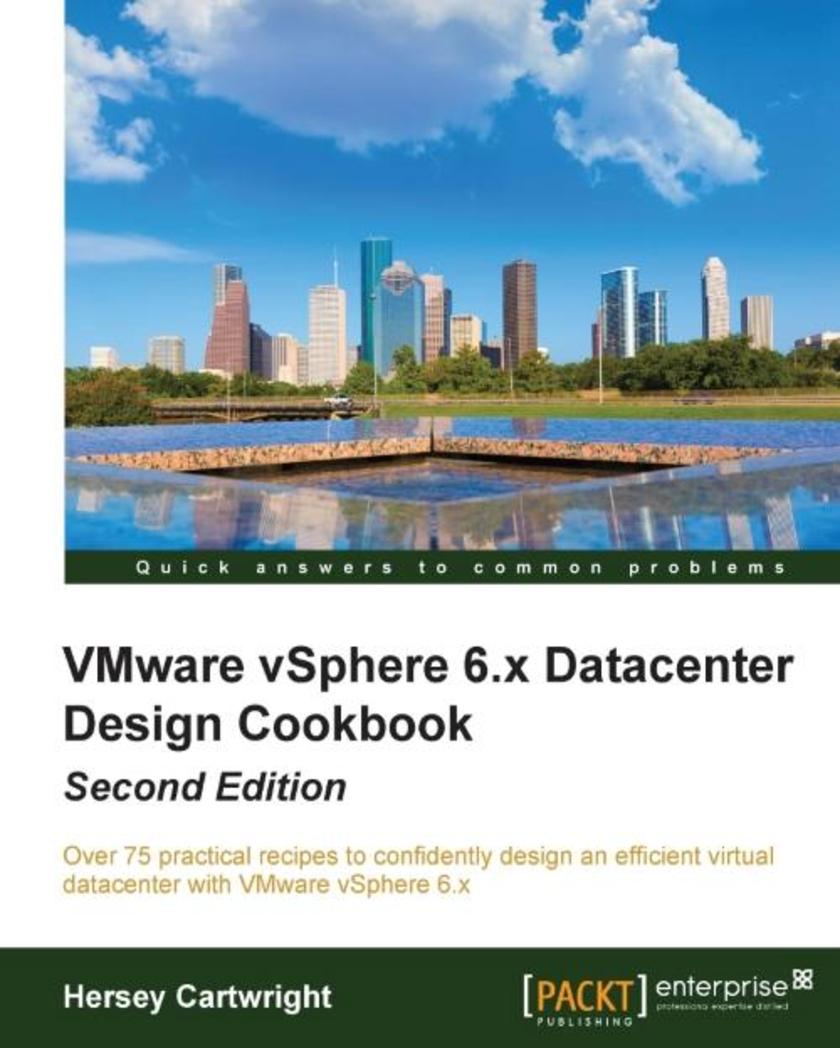
VMware vSphere 6.x Datacenter Design Cookbook - Second Edition
¥107.90
Over 75 practical recipes to confidently design an efficient virtual datacenter with VMware vSphere 6.x About This Book Get the first book on the market that helps you design a virtualized data center with VMware vSphere 6 Achieve enhanced compute, storage, network, and management capabilities for your virtual data center Exciting and practical recipes help you to design a virtual data easily by leveraging the features of VMware vSphere 6 Who This Book Is For If you are an administrator or consultant interested in designing virtualized datacenter environments using VMware vSphere 6.x or previous versions of vSphere and the supporting components, this book is for you. It will help both new and experienced architects deliver professional VMware vSphere virtual datacenter designs. What You Will Learn Identify key factors related to a vSphere design and apply them to every step of the design process Mitigate security risks and meet compliance requirements in a vSphere design. Create a vSphere conceptual design by identifying technical and business requirements Determine the type of database to use based on the deployment size. Design for performance, availability, recoverability, manageability, and security Map the logical resource design into the physical vSphere design Create professional vSphere design documentation to ensure a successful implementation of the vSphere design Leverage the latest vSphere 6.x features to ensure manageability, performance, availability, and security in a virtual datacenter design In Detail VMware is the industry leader in data center virtualization. The vSphere 6.x suite of products provides a robust and resilient platform to virtualize server and application workloads. With the release of 6.x a whole range of new features has come along such as ESXi Security enhancements, fault tolerance, high availability enhancements, and virtual volumes, thus simplifying the secure management of resources, the availability of applications, and performance enhancements of workloads deployed in the virtualized datacenter. This book provides recipes to create a virtual datacenter design using the features of vSphere 6.x by guiding you through the process of identifying the design factors and applying them to the logical and physical design process. You’ll follow steps that walk you through the design process from beginning to end, right from the discovery process to creating the conceptual design; calculating the resource requirements of the logical storage, compute, and network design; mapping the logical requirements to a physical design; security design; and finally creating the design documentation. The recipes in this book provide guidance on making design decisions to ensure the successful creation, and ultimately the successful implementation, of a VMware vSphere 6.x virtual data center design. Style and Approach The book follows a recipe-based approach that consists of practical recipes to effectively design a virtual data center.
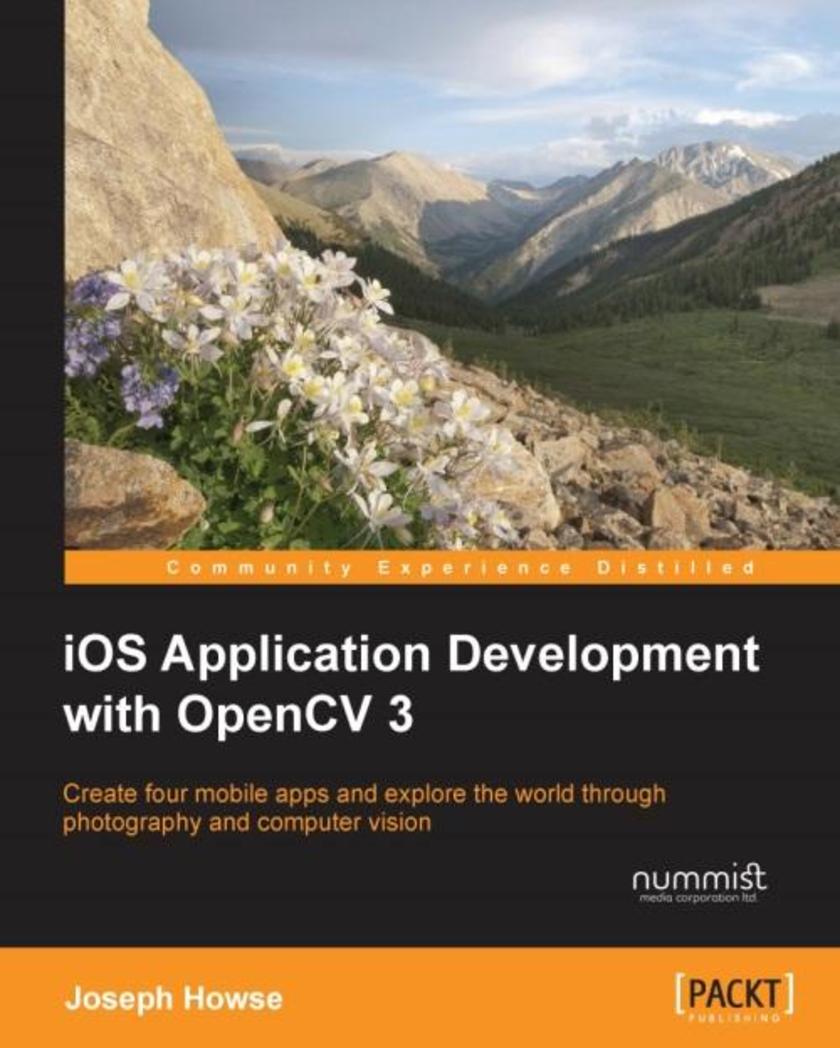
iOS Application Development with OpenCV 3
¥63.21
Create four mobile apps and explore the world through photography and computer vision About This Book Efficiently harness iOS and OpenCV to capture and process high-quality images at high speed Develop photographic apps and augmented reality apps quickly and easily Detect, recognize, and morph faces and objects Who This Book Is For If you want to do computational photography and computer vision on Apple’s mobile devices, then this book is for you. No previous experience with app development or OpenCV is required. However, basic knowledge of C++ or Objective-C is recommended. What You Will Learn Use Xcode and Interface Builder to develop iOS apps Obtain OpenCV's standard modules and build extra modules from source Control all the parameters of the iOS device's camera Capture, save, and share photos and videos Analyze colors, shapes, and textures in ordinary and specialized photographs Blend and compare images to create special photographic effects and augmented reality tools Detect faces and morph facial features Classify coins and other objects In Detail iOS Application Development with OpenCV 3 enables you to turn your smartphone camera into an advanced tool for photography and computer vision. Using the highly optimized OpenCV library, you will process high-resolution images in real time. You will locate and classify objects, and create models of their geometry. As you develop photo and augmented reality apps, you will gain a general understanding of iOS frameworks and developer tools, plus a deeper understanding of the camera and image APIs. After completing the book's four projects, you will be a well-rounded iOS developer with valuable experience in OpenCV. Style and approach The book is practical, creative, and precise. It shows you the steps to create and customize five projects that solve important problems for beginners in mobile app development and computer vision. Complete source code and numerous visual aids are included in each chapter. Experimentation is an important part of the book. You will use computer vision to explore the real world, and then you will refine the projects based on your findings.
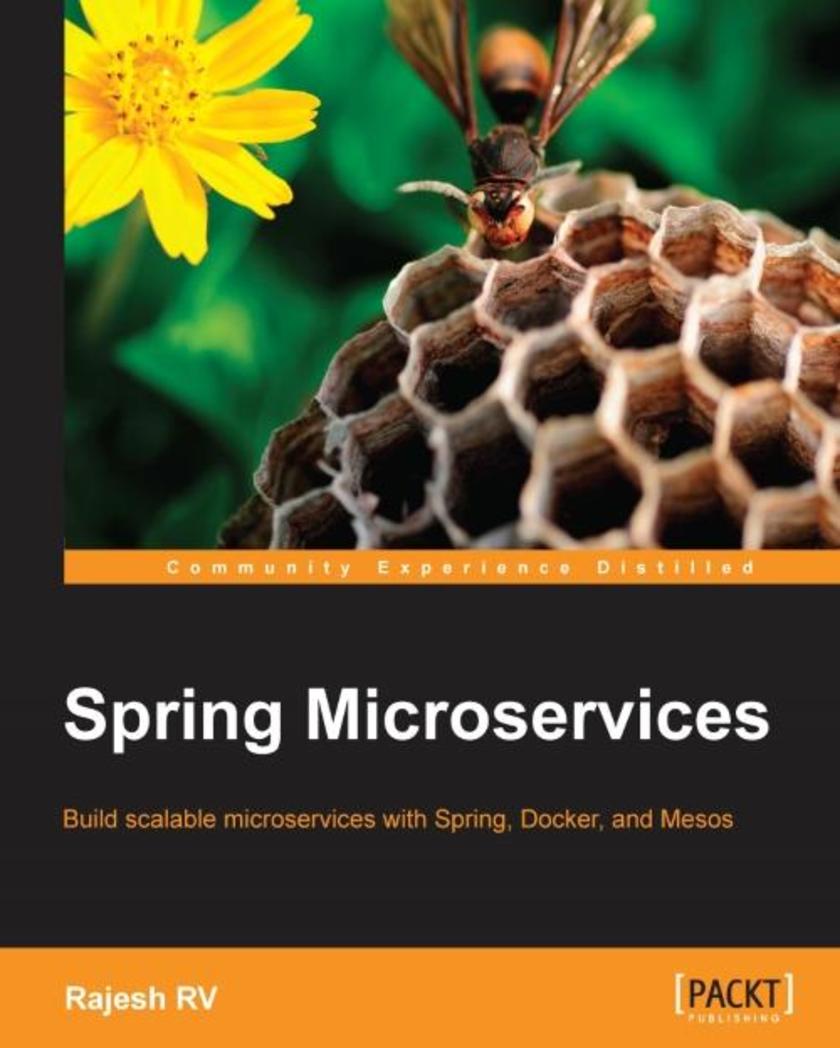
Spring Microservices
¥90.46
Build scalable microservices with Spring, Docker, and Mesos About This Book Learn how to efficiently build and implement microservices in Spring, and how to use Docker and Mesos to push the boundaries of what you thought possible Examine a number of real-world use cases and hands-on code examples. Distribute your microservices in a completely new way Who This Book Is For If you are a Spring developers and want to build cloud-ready, internet-scale applications to meet modern business demands, then this book is for you Developers will understand how to build simple Restful services and organically grow them to truly enterprise grade microservices ecosystems. What You Will Learn Get to know the microservices development lifecycle process See how to implement microservices governance Familiarize yourself with the microservices architecture and its benefits Use Spring Boot to develop microservices Find out how to avoid common pitfalls when developing microservices Be introduced to end-to-end microservices written in Spring Framework and Spring Boot In Detail The Spring Framework is an application framework and inversion of the control container for the Java platform. The framework's core features can be used by any Java application, but there are extensions to build web applications on top of the Java EE platform. This book will help you implement the microservice architecture in Spring Framework, Spring Boot, and Spring Cloud. Written to the latest specifications of Spring, you'll be able to build modern, Internet-scale Java applications in no time. We would start off with the guidelines to implement responsive microservices at scale. We will then deep dive into Spring Boot, Spring Cloud, Docker, Mesos, and Marathon. Next you will understand how Spring Boot is used to deploy autonomous services, server-less by removing the need to have a heavy-weight application server. Later you will learn how to go further by deploying your microservices to Docker and manage it with Mesos. By the end of the book, you'll will gain more clarity on how to implement microservices using Spring Framework and use them in Internet-scale deployments through real-world examples. Style and approach The book follows a step by step approach on how to develop microservices using Spring Framework, Spring Boot, and a set of Spring Cloud components that will help you scale your applications.
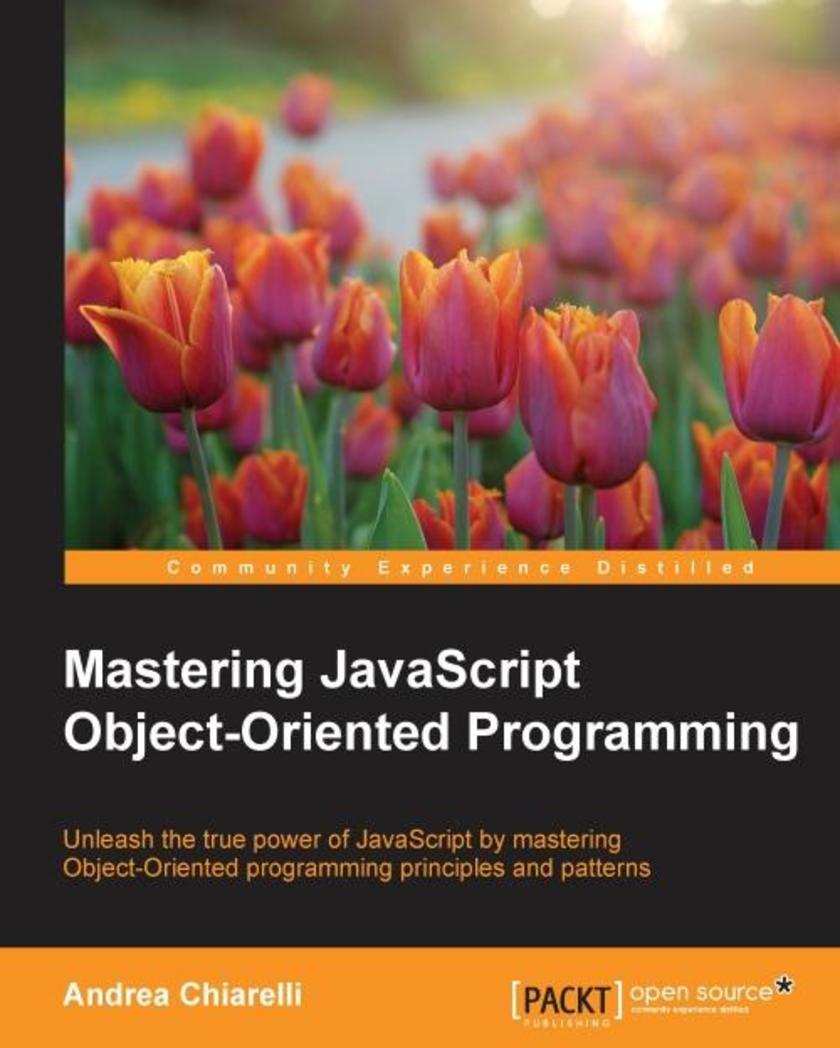
Mastering JavaScript Object-Oriented Programming
¥80.65
Unleash the true power of JavaScript by mastering Object-Oriented programming principles and patterns About This Book Covering all the new Object-Oriented features introduced in ES6, this book shows you how to build large-scale web apps Build apps that promote scalability, maintainability, and reusability Learn popular Object-Oriented programming (OOP) principles and design patterns to build robust apps Implement Object-Oriented concepts in a wide range of front-end architectures Who This Book Is For This book is ideal for you if you are a JavaScript developers who wants to gain expertise in OOP with JavaScript to improve your web development skills and build professional quality web applications. What You Will Learn Master JavaScript's OOP features, including the one's provided by ES6 specification Identify and apply the most common design patterns such as Singleton, Factory, Observer, Model-View-Controller, and Mediator Patterns Understand the SOLID principles and their benefits Use the acquired OOP knowledge to build robust and maintainable code Design applications using a modular architecture based on SOLID principles In Detail ECMAScript 6 introduces several new Object-Oriented features that drastically change the way developers structure their projects. Web developers now have some advanced OOP functionality at their disposal to build large-scale applications in JavaScript. With this book, we'll provide you with a comprehensive overview of OOP principles in JavaScript and how they can be implemented to build sophisticated web applications. Kicking off with a subtle refresher on objects, we'll show you how easy it is to define objects with the new ES6 classes. From there, we'll fly you through some essential OOP principles, forming a base for you to get hands-on with encapsulation. You'll get to work with the different methods of inheritance and we'll show you how to avoid using inheritance with Duck Typing. From there, we'll move on to some advanced patterns for object creation and you'll get a strong idea of how to use interesting patterns to present data to users and to bind data. We'll use the famous promises to work with asynchronous processes and will give you some tips on how to organize your code effectively. You'll find out how to create robust code using SOLID principles and finally, we'll show you how to clearly define the goals of your application architecture to get better, smarter, and more effective coding. This book is your one-way ticket to becoming a JavaScript Jedi who can be counted on to deliver flexible and maintainable code. Style and approach This comprehensive guide on advanced OOP principles and patterns in JavaScript is packed with real-world use cases, and shows you how to implement advanced OOP features to build sophisticated web applications that promote scalability and reusability.
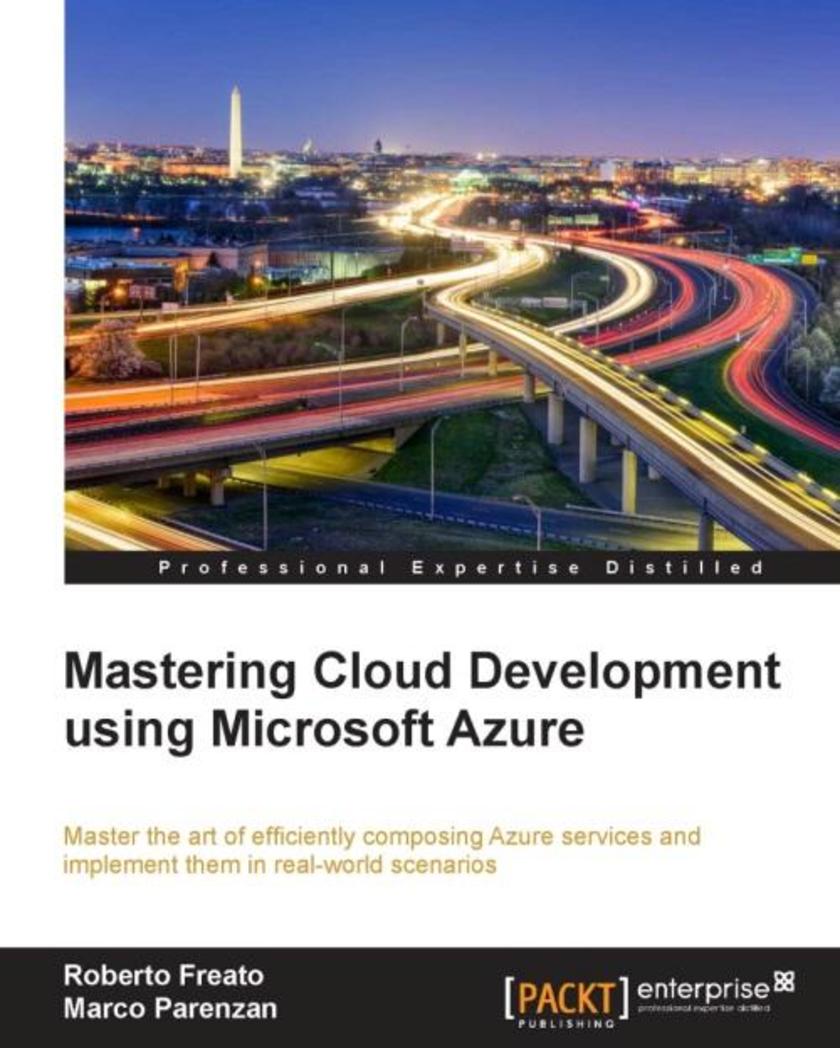
Mastering Cloud Development using Microsoft Azure
¥80.65
Master the art of efficiently composing Azure services and implement them in real-world scenarios About This Book Build an effective development environment in Azure using the right set of technologies. Architect a full-stack solution in the cloud to choose the best service set A comprehensive guide full of real-life examples to help you take your developer skills up a notch Who This Book Is For If you are a developer, a full-stack developer, or an architect with an intermediate level understanding of cloud computing and Microsoft Azure, and you want to take your skills up a notch, this book is for you. Prior knowledge and understanding of cloud development strategies is assumed. What You Will Learn Set up a development environment with VMs, ARM, and RemoteApp Connect with VPNs to manage security and backups Establish a front-end architecture with AppService, storage, search, and caching Implement identity solutions, integrate applications, and use data Integrate cross-platform mobile applications with the cloud Consistently build and manage an API layer for millions of users Work with messages in the enterprise Deploy your services as an IT expert with ARM templates In Detail Microsoft Azure is a cloud computing platform that supports many different programming languages, tools, and frameworks, including both Microsoft-specific and third-party software and systems. This book starts by helping you set up a professional development environments in the cloud and integrating them with your local environment to achieve improved efficiency. You will move on to create front-end and back-end services, and then build cross-platform applications using Azure. Next you’ll get to grips with advanced techniques used to analyze usage data and automate billing operations. Following on from that, you will gain knowledge of how you can extend your on-premise solution to the cloud and move data in a pipeline. In a nutshell, this book will show you how to build high-quality, end-to-end services using Microsoft Azure. By the end of this book, you will have the skillset needed to successfully set up, develop, and manage a full-stack Azure infrastructure. Style and Approach This comprehensive guide to Azure has both explorative parts and step-by-step ones. Each chapter defines a learning path to a specific scenario, mixing the appropriate technologies and building blocks efficiently.
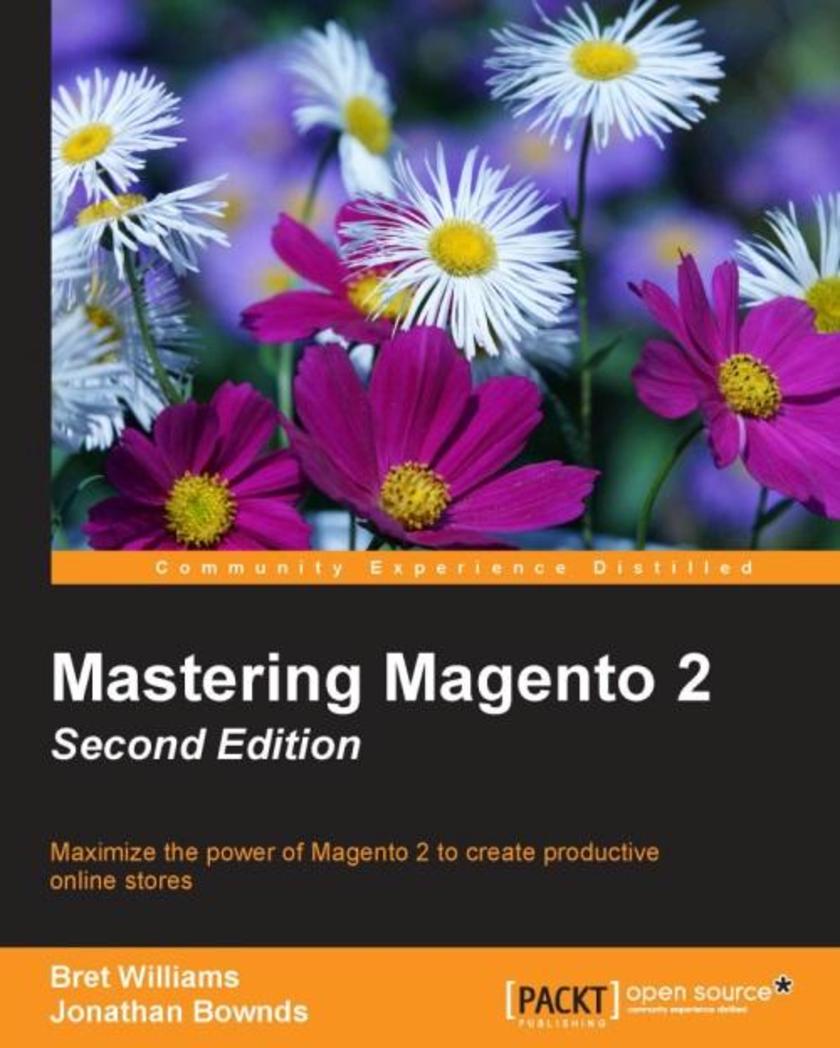
Mastering Magento 2 - Second Edition
¥80.65
Maximize the power of Magento 2 to create productive online stores About This Book Updated for Magento 2, this book offers a comprehensive coverage of all the new features of Magento to build modern online stores Exploit little-known techniques to extend, tune, and manage your Magento installation Detailed coverage to make your store run faster, better, and more productively Who This Book Is For This book is for web designers, developers, or e-commerce store-owners who design or manage Magento stores for their clients and want to gain an in-depth understanding of the various features of Magento 2. What You Will Learn Discover what makes Magento 2 different — and even more powerful Develop strategies to create multi-store environments Find out how to create themes and extend the functionality of Magento 2 Create sound development practices to insure code integrity and security Know the why, as well as the how, behind using Magento 2 In Detail The long-awaited release of the world's most popular online solution, Magento 2, is now out with an all new interface and several enhancements. This book offers you advanced guidance on managing, optimizing, and extending your store while taking advantage of the new features of Magento 2. This is a comprehensive guide to using the all new features and interface of Magento 2 to build, extend, and design online stores. From planning your Magento installation through to advanced techniques designed to make your store as successful as possible, this book is your roadmap to managing your Magento store. Focusing on Magento's Community version, the book covers everything from creating and managing multiple stores to fine-tuning Magento for speed and performance. You’ll learn how to manage categories, products, design themes, extensions, and more. Style and Approach This book will be a straightforward guide that will dive deep into both aspects of developing and administering beautiful and secure stores. Get a firm idea of the different tools that the latest version has to offer to ensure the best customer experience.
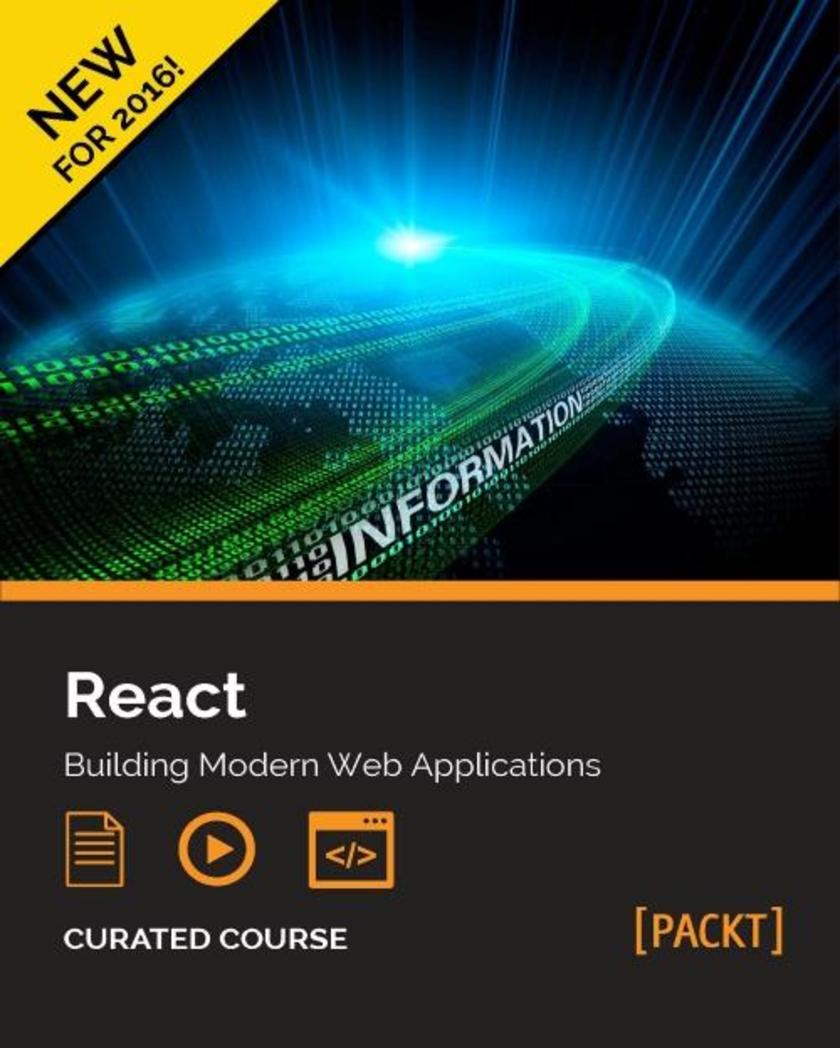
React: Building Modern Web Applications
¥171.12
Master the art of building dynamic, modern web applications with React About This Book Learn the hot new frontend web framework from Facebook – ReactJS, an easy way of developing the V in MVC and a better approach to software engineering in JavaScript A fast-paced guide to designing and building scalable and maintainable web apps with React.js Learn all the new ES6 features and be among the most prominent JavaScript developers who can write efficient JS programs as per the latest standards Master the art of building modern web applications using React Learn to build modern native iOS and Android applications using JavaScript and the incredible power of React Who This Book Is For This course is for web developers that want to unlock high performance dynamism in the applications that they create. If you want a comprehensive journey into one of the most important JavaScript frameworks around today, dive into this course. What You Will Learn Take control of the front end with reactive JavaScript programming Discover what ReactJS offers your development - before mastering it Create React elements with properties and children Use JSX to speed up your React development process Test your React components with the Jest test framework Learn the latest syntax of ES6 Execute ES6 in a non-supported ES6 environment Learn the principles of object-oriented programming Create a complete single-page application Use an application design plan to write smarter, more meaningful code Learn how to use animations to give extra style to your application Get to grips with the React Native environment Write your own custom native UI components Integrate native modules in Objective-C and Java that interact with JavaScript In Detail ReactJS has helped to transform the web as we know it. Designed by Facebook to help developers build rapid, responsive UI that can deal with data-intensive usage, it’s an essential component in any web developer’s skillset. This ReactJS course, in five connected modules, provides you with a fast, engaging and practical route into ReactJS—so you can build powerful, elegant, and modern web applications. Beginning with the Reactive Programming with JavaScript module, you will learn how to take advantage of a reactive and functional programming paradigm to rethink how you approach your JavaScript code. It’s built to help you understand the concepts, relevant and applicable for any frontend developer. You’ll then dive a little deeper into ReactJS. The second module gives you a rapid look through the fundamentals of ReactJS, showing you how to build a basic application and demonstrating how to implement the Flux architecture. In the third module you will get to grips with ES6—this will make you a more fluent JavaScript developer, giving you control over ReactJS. You can put your old JavaScript hacks aside and instead explore how to create ES6 custom iterators. In the final two modules you’ll learn how to fully master ReactJS, exploring its wider ecosystem of tools that have helped to make it one of the most important tools in web development today. Ending with insights and guidance on React Native, the tool built for today’s demand for native, intuitive user experiences and interfaces, with this course you can be confident in building dynamic and modern apps with React. Style and approach Consisting of five separate modules, journey from the fundamentals of reactive programming to the exciting possibilities of React Native. Each module builds on each other, helping you to incrementally develop your skills and knowledge.

3D Printing Designs: Fun and Functional Projects
¥54.49
Get to grips with 3D printing and learn to model designs using Blender About This Book From the author who brought you the first practical look at 3D printing with 3D Printing Blueprints Get a comprehensive coverage of the prototyping techniques you need to know to start printing your own 3D designs Rekindle your mathematical genius to design personalized objects for complex puzzles Who This Book Is For If you’re new to the world of 3D printing, this is the book for you. Some basic knowledge of Blender and geometry would be helpful, but is not necessary. What You Will Learn Get to know about the different types of 3D printers and their limitations See how Y, H, and T shapes illustrate different ideas of successful 3D design for home 3D printers Set up and configure Blender to model a file for 3D printing Understand material characteristics, printing specifications, tolerances, and design tips Work through the techniques of editing complex meshes, smoothing, combining shapes, and exporting them into STL files for printing Break down complex geometries into multiple simple shapes and model them in layers using Blender Design, manipulate, and export 3D models for 3D printing with Blender Master the art of creating meshes, scaling, subdivision, and adding detail with the Boolean modifier as well as sculpting a custom shape Cut a model into small pieces and understand how to design complex interlocking joints that form a part of a jigsaw puzzle In Detail 3D printing has revolutionized the way that global industries conceptualize and design products for mass consumption. Considered as the next “trillion-dollar” business, every industry is in the race to equip its personnel with techniques to prototype and simplify complex manufacturing process. This book will take you through some simple to complex and effective principles of designing 3D printed objects using Blender. There is a comprehensive coverage of projects such as a 3D print-ready octopus pencil holder, which will teach you how to add basic geometric shapes, and use techniques such as extruding and subdividing to transform these shapes into complex meshes. Furthermore, you’ll learn to use various techniques to derive measurements for an object, model these objects using Blender, organize the parts into layers, and later combine them to create the desired object with the help of a 3D printable SD card holder ring design project. The final project will help you master the techniques of designing simple to complex puzzles models for 3D printing. Through the course of the book, we'll explore various robust sculpting methods supported by Blender to create objects. You’ll move, rotate, and scale the object, and manipulate the view. You’ll edit objects with actions such as bends or curves, similar to drawing or building up a clay structure of different shapes and sizes. By the end of the book, you will have gained thorough practical hands-on experience to be able to create a real-world 3D printable object of your choice. Style and approach This is a hands-on guide to the world of 3D printing. With the help of simple to complex projects, you'll learn various techniques to design 3D printable objects using Blender.
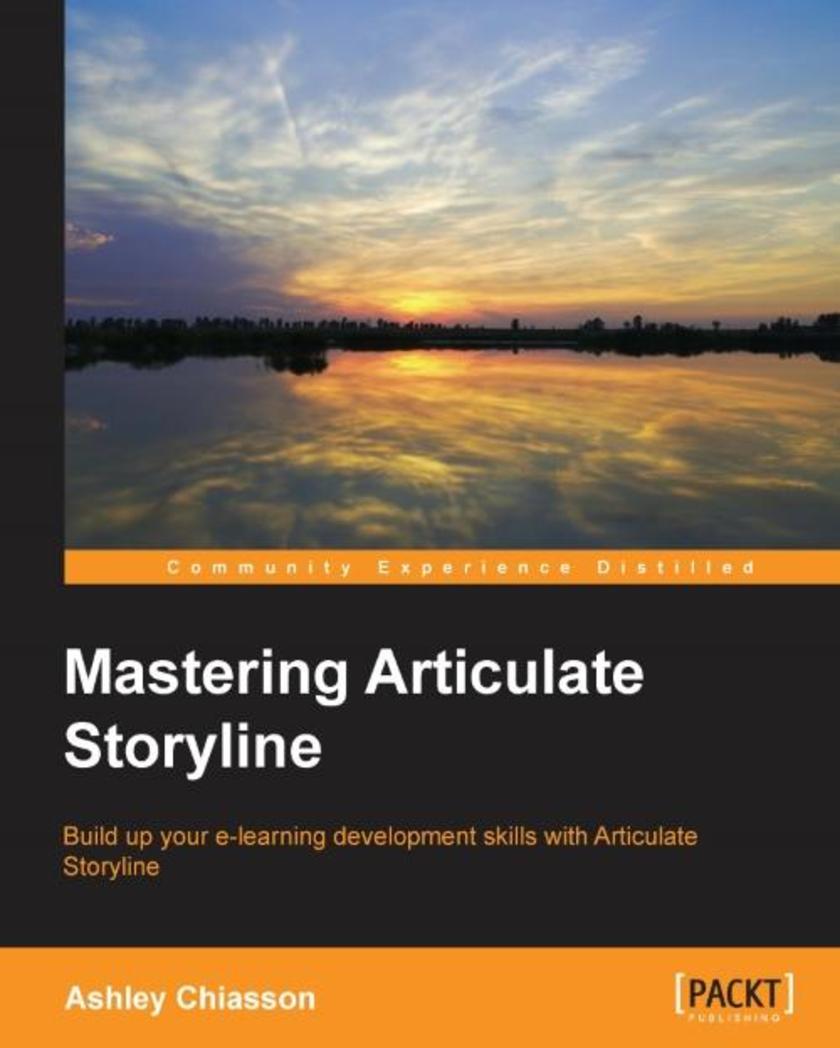
Mastering Articulate Storyline
¥80.65
Build up your e-learning development skills with Articulate Storyline About This Book Develop interactive e-learning projects using advanced techniques Impress your clients and/or audience with out-of-the-box interactions Step-by-step walkthroughs provide practical solutions Who This Book Is For This book is for anyone experienced in using the basic functions of Articulate Storyline who are yearning to learn more. It’s designed to provide a brief overview of key concepts, to help you refresh your knowledge of common functions, and teach you how to push Storyline to the limit! What You Will Learn Familiarize yourself with best practices for e-learning development Review key Storyline concepts before diving in deep with development Discover new ways of working within Storyline to extend slide content and enhance interactivity Personalize your story with advanced variable-based interactions See how JavaScript can be used in your stories to do some really neat things Assess your learners using customized assessment options and find out how to troubleshoot common issues Customize the learning experience by modifying the player properties and publishing settings Customize your story and prepare it for publishing In Detail Storyline is a powerful e-learning authoring tool that allows you to take your creativity to the next level. However, more often than not, projects don't require such complex interactions, leaving Storyline's full capabilities untapped. This book will provide you with the information you need to take your Storyline development up a notch by leveraging the full suite of possibilities Storyline has to offer. You will be provided with a refresher of the key concepts before we take you deep into the exciting world of enhanced interactivity, variables, and even some JavaScript—oh my! With downloadable activities, you can either follow along and compare your output, use the activities as they are, modify the activities to suit your own needs, or reverse-engineer the activities to better understand how they were developed. Style and approach You’ll get hands-on working with project files that were created with you in mind. As you move through each chapters, the practical, step-by-step approach will get you using some of the more advanced features of Storyline to create polished and snazzy interactions.
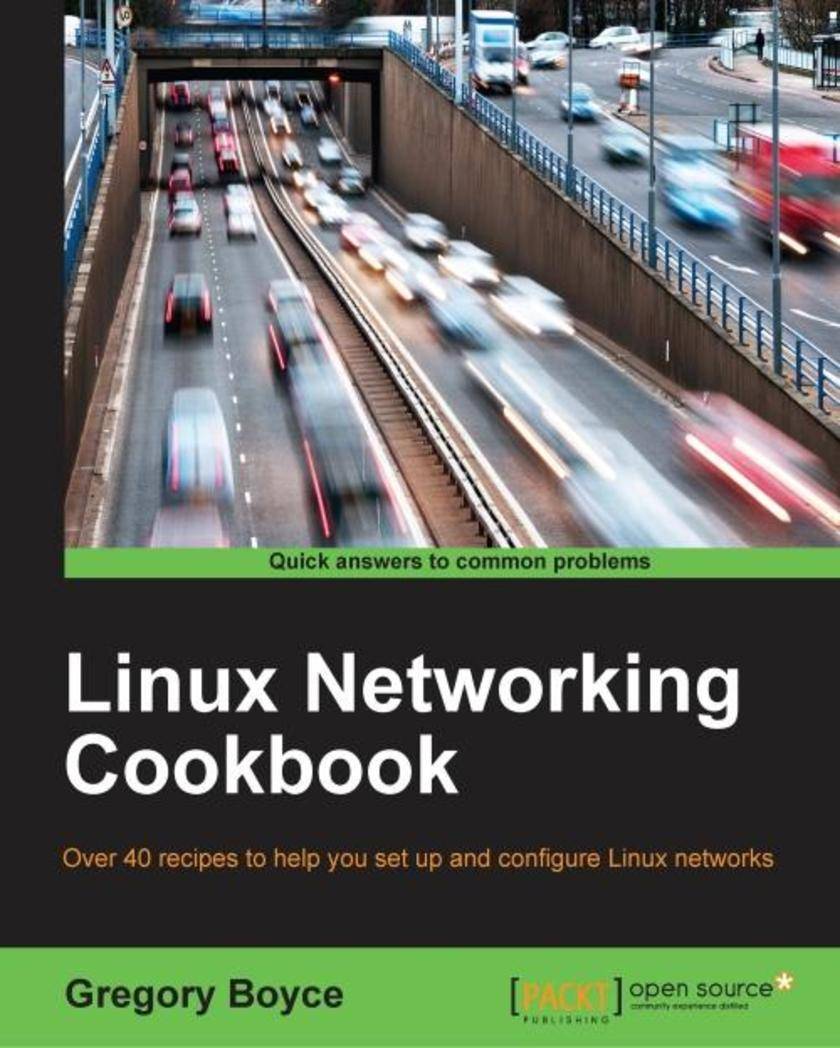
Linux Networking Cookbook
¥63.21
Over 40 recipes to help you set up and configure Linux networks About This Book Move beyond the basics of how a Linux machine works and gain a better understanding of Linux networks and their configuration Impress your peers by setting up and configuring a Linux server and its various network elements like a pro This is a hands-on solution guide to building, maintaining, and securing a network using Linux Who This Book Is For This book is targeted at Linux systems administrators who have a good basic understanding and some prior experience of how a Linux machine operates, but want to better understand how various network services function, how to set them up, and how to secure them. You should be familiar with how to set up a Linux server and how to install additional software on them. What You Will Learn Route an IPv6 netblock to your local network Modify your named instance to support setting hostnames for your IPv6 addresses Use SSH for remote console access Configure NGINX with TLS Secure XMPP with TLS Leverage iptables6 to firewall your IPv6 traffic Configure Samba as an Active Directory compatible directory service In Detail Linux can be configured as a networked workstation, a DNS server, a mail server, a firewall, a gateway router, and many other things. These are all part of administration tasks, hence network administration is one of the main tasks of Linux system administration. By knowing how to configure system network interfaces in a reliable and optimal manner, Linux administrators can deploy and configure several network services including file, web, mail, and servers while working in large enterprise environments. Starting with a simple Linux router that passes traffic between two private networks, you will see how to enable NAT on the router in order to allow Internet access from the network, and will also enable DHCP on the network to ease configuration of client systems. You will then move on to configuring your own DNS server on your local network using bind9 and tying it into your DHCP server to allow automatic configuration of local hostnames. You will then future enable your network by setting up IPv6 via tunnel providers. Moving on, we’ll configure Samba to centralize authentication for your network services; we will also configure Linux client to leverage it for authentication, and set up a RADIUS server that uses the directory server for authentication. Toward the end, you will have a network with a number of services running on it, and will implement monitoring in order to detect problems as they occur. Style and approach This book is packed with practical recipes and a task-based approach that will walk you through building, maintaining, and securing a computer network using Linux.
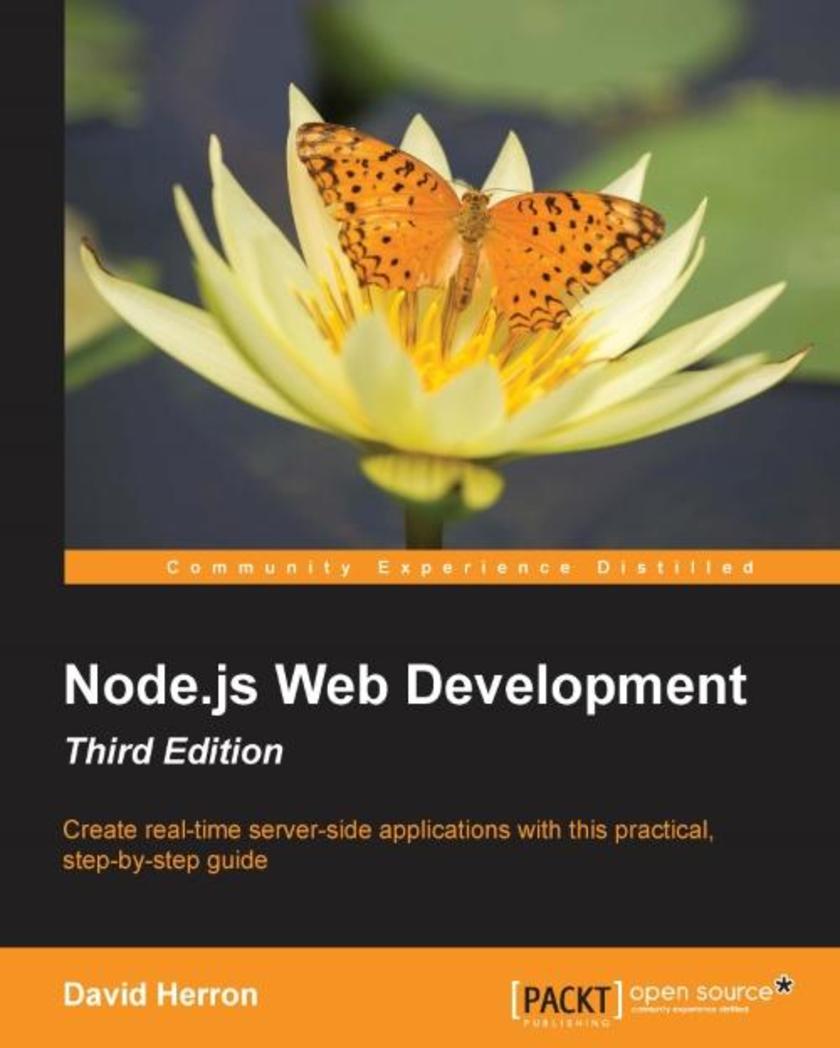
Node.js Web Development - Third Edition
¥80.65
Create real-time server-side applications with this practical, step-by-step guide About This Book Learn about server-side JavaScript with Node.js and Node modules through the most up-to-date book on Node.js web development Understand website development both with and without the Connect/Express web application framework Develop both HTTP server and client applications Who This Book Is For This book is for anybody looking for an alternative to the "P" languages (Perl, PHP, and Python), or anyone looking for a new paradigm of server-side application development. You should have at least a rudimentary understanding of JavaScript and web application development. What You Will Learn Install and use Node.js for both development and deployment Use the Express application framework Configure Bootstrap for mobile-first theming Use data storage engines such as MySQL, SQLITE3, and MongoDB Understand user authentication methods, including OAuth, with third-party services Deploy Node.js to live servers, including microservice development with Docker Perform unit testing with Mocha Perform functional testing of the web application with CasperJS In Detail Node.js is a server-side JavaScript platform using an event driven, non-blocking I/O model allowing users to build fast and scalable data-intensive applications running in real time. Node.js Web Development shows JavaScript is not just for browser-side applications. It can be used for server-side web application development, real-time applications, microservices, and much more. This book gives you an excellent starting point, bringing you straight to the heart of developing web applications with Node.js. You will progress from a rudimentary knowledge of JavaScript and server-side development to being able to create and maintain your own Node.js application. With this book you'll learn how to use the HTTP Server and Client objects, data storage with both SQL and MongoDB databases, real-time applications with Socket.IO, mobile-first theming with Bootstrap, microservice deployment with Docker, authenticating against third-party services using OAuth, and much more. Style and Approach This book is a practical guide for anyone looking to develop striking and robust web applications using Node.js.
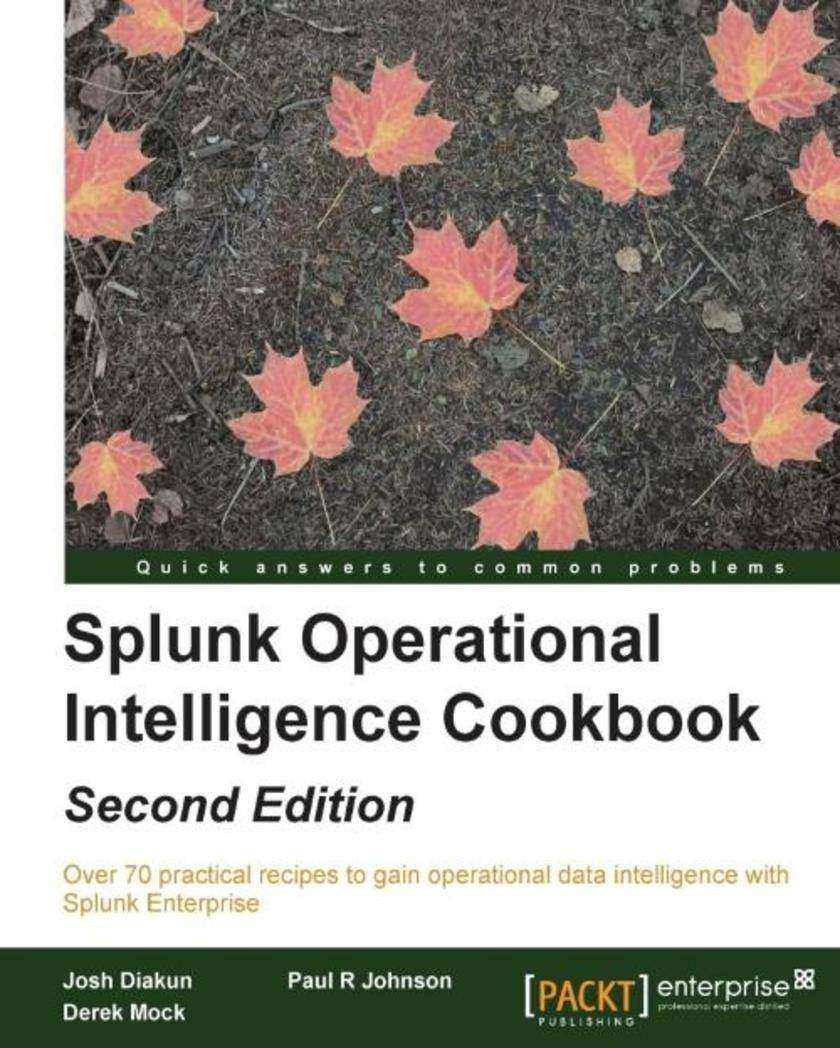
Splunk Operational Intelligence Cookbook - Second Edition
¥99.18
Over 70 practical recipes to gain operational data intelligence with Splunk Enterprise About This Book This is the most up-to-date book on Splunk 6.3 and teaches you how to tackle real-world operational intelligence scenarios efficiently Get business insights using machine data using this easy-to-follow guide Search, monitor, and analyze your operational data skillfully using this recipe-based, practical guide Who This Book Is For This book is intended for users of all levels who are looking to leverage the Splunk Enterprise platform as a valuable operational intelligence tool. The recipes provided in this book will appeal to individuals from all facets of business, IT, security, product, marketing, and many more! Also, existing users of Splunk who want to upgrade and get up and running with Splunk 6.3 will find this book invaluable. What You Will Learn Use Splunk to gather, analyze, and report on data Create dashboards and visualizations that make data meaningful Build an operational intelligence application with extensive features and functionality Enrich operational data with lookups and workflows Model and accelerate data and perform pivot-based reporting Build real-time, *ed, and other intelligence-driven alerts Summarize data for longer term trending, reporting, and analysis Integrate advanced JavaScript charts and leverage Splunk's API In Detail Splunk makes it easy for you to take control of your data, and with Splunk Operational Cookbook, you can be confident that you are taking advantage of the Big Data revolution and driving your business with the cutting edge of operational intelligence and business analytics. With more than 70 recipes that demonstrate all of Splunk’s features, not only will you find quick solutions to common problems, but you’ll also learn a wide range of strategies and uncover new ideas that will make you rethink what operational intelligence means to you and your organization. You’ll discover recipes on data processing, searching and reporting, dashboards, and visualizations to make data shareable, communicable, and most importantly meaningful. You’ll also find step-by-step demonstrations that walk you through building an operational intelligence application containing vital features essential to understanding data and to help you successfully integrate a data-driven way of thinking in your organization. Throughout the book, you’ll dive deeper into Splunk, explore data models and pivots to extend your intelligence capabilities, and perform advanced searching to explore your data in even more sophisticated ways. Splunk is changing the business landscape, so make sure you’re taking advantage of it. Style and approach Splunk is an excellent platform that allows you to make sense of machine data with ease. The adoption of Splunk has been huge and everyone who has gone beyond installing Splunk wants to know how to make most of it. This book will not only teach you how to use Splunk in real-world scenarios to get business insights, but will also get existing Splunk users up to date with the latest Splunk 6.3 release.
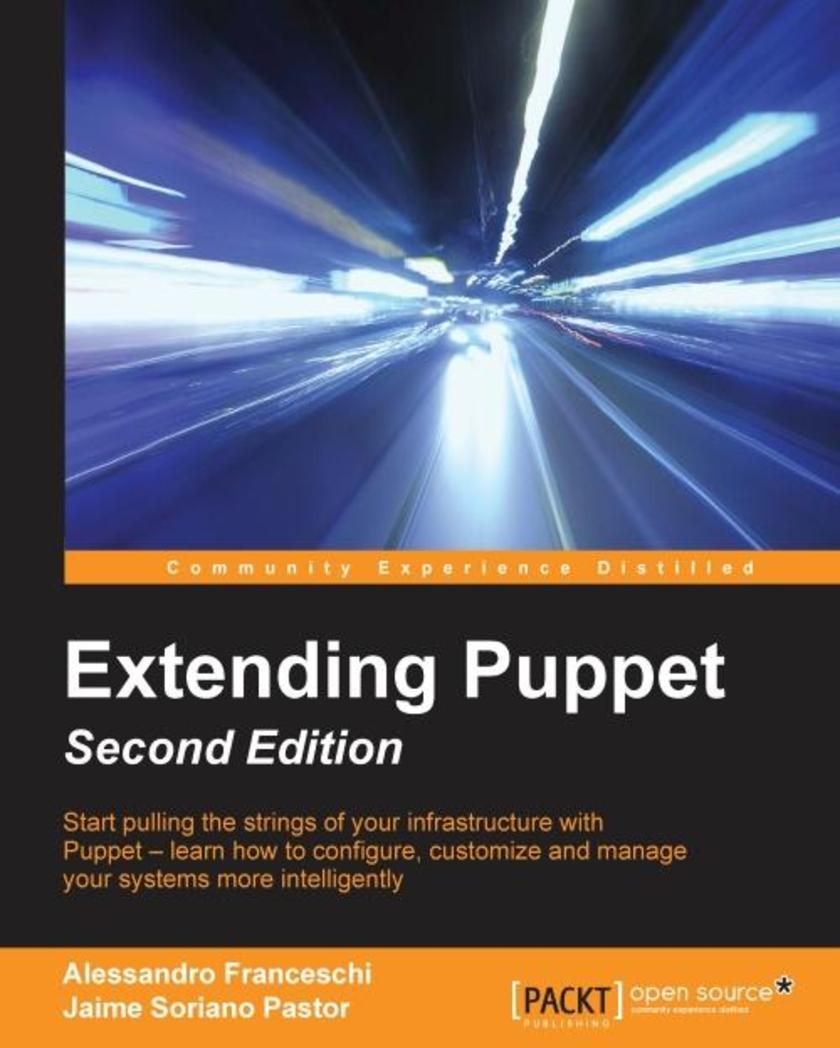
Extending Puppet - Second Edition
¥71.93
Start pulling the strings of your infrastructure with Puppet – learn how to configure, customize, and manage your systems more intelligently About This Book Explore the wider Puppet ecosystem of useful tools Design and manage your Puppet architecture for optimum performance Write more efficient code that keeps your infrastructure more robust Who This Book Is For If you are a Puppet user, this book will help you on different levels. If you a beginner, we summarize the key Puppet components and give you the elements to have a broader vision. For more experienced users, you will be surprised by with topics on designing, implementing, adapting, and deploying Puppet architectures. If you are expert, you will find topics and information that is rarely exposed in other books, giving you an insight into Puppet's future and its usage on alternative devices. What You Will Learn Learn the principles of Puppet language and ecosystem Extract the features of Hiera and PuppetDB’s power usage Explore the different approaches to Puppet architecture design Use Puppet to manage network, cloud, and virtualization devices Manage and test the Puppet code workflow Tweak, hack, and adapt the Puppet extension points Get a run through of the strategies and patterns to introduce Puppet automation Master the art of writing reusable modules In Detail Puppet has changed the way we manage our systems, but Puppet itself is changing and evolving, and so are the ways we are using it. To tackle our IT infrastructure challenges and avoid common errors when designing our architectures, an up-to-date, practical, and focused view of the current and future Puppet evolution is what we need. With Puppet, you define the state of your IT infrastructure, and it automatically enforces the desired state. This book will be your guide to designing and deploying your Puppet architecture. It will help you utilize Puppet to manage your IT infrastructure. Get to grips with Hiera and learn how to install and configure it, before learning best practices for writing reusable and maintainable code. You will also be able to explore the latest features of Puppet 4, before executing, testing, and deploying Puppet across your systems. As you progress, Extending Puppet takes you through higher abstraction modules, along with tips for effective code workflow management. Finally, you will learn how to develop plugins for Puppet - as well as some useful techniques that can help you to avoid common errors and overcome everyday challenges. Style and approach This is a collection of specific information about multiple topics related to Puppet and its ecosystem. Starting from a review of the very basics to more advanced topics, mixing practical advice with important theory and broader perspective, along with implementation details.

Android Studio 2 Essentials - Second Edition
¥63.21
A fast-paced guide to get you up and running with Android application development using Android Studio 2 About This Book Configure, build, and run Android projects with Android Studio 2 Test your apps using the Android emulator and learn how to manage virtual devices Explore how Android Studio 2 can be made a part of your workflow to reduce the overall development time Who This Book Is For If you are an Android developer looking to quickly take advantage of Android Studio 2 and add it to your workflow, then this book is for you. It is assumed that you are familiar with the OOP paradigm and Java. You are recommended to have prior knowledge of the main characteristics of the Android mobile system to get the most out of this book. What You Will Learn Install Android Studio on your system and configure the Android Software Development Kit Create your first project and explore its structure Manage a project in Android Studio 2 with Gradle Improve your productivity while programming by getting the best of the code editor Design the user interface using layouts and see how to handle various user events Integrate Google Play services into your project efficiently Monitor your app while it's running and constantly improve its performance In Detail Android Studio 2, the official IDE for Android application development, dramatically improves your workflow by letting you quickly see changes running on your device or emulator. It gives developers a unique platform by making app builds and deployment faster. This book will get you up and running with all the essential features of Android Studio 2 to optimize your development workflow. Starting off with the basic installation and configuration of Android Studio 2, this book will help you build a new project by showing you how to create a custom launcher icon and guiding you to choose your project. You will then gain an insight into the additional tools provided in Android Studio, namely the Software Development Kit (SDK) Manager, Android Virtual Device (AVD) Manager, and Javadoc. You’ll also see how to integrate Google Play Services in an Android project. Finally, you’ll become familiar with the Help section in Android Studio, which will enable you to search for support you might require in different scenarios. Style and approach A comprehensive and practical guide that will give you the essential skills required to develop Android applications quickly using Android Studio. With the help of a real-world project, this book will show how to make Android Studio a part of your development process and optimize it.

Oracle Database 12c Security Cookbook
¥99.18
Secure your Oracle Database 12c with this valuable Oracle support resource, featuring more than 100 solutions to the challenges of protecting your data About This Book Explore and learn the new security features introduced in Oracle Database 12c, to successfully secure your sensitive data Learn how to identify which security strategy is right for your needs – and how to apply it Each ‘recipe’ provides you with a single step-by-step solution, making this book a vital resource, delivering Oracle support in one accessible place Who This Book Is For This book is for DBAs, developers, and architects who are keen to know more about security in Oracle Database 12c. This book is best suited for beginners and intermediate-level database security practitioners. Basic knowledge of Oracle Database is expected, but no prior experience of securing a database is required. What You Will Learn Analyze application privileges and reduce the attack surface Reduce the risk of data exposure by using Oracle Data Redaction and Virtual Private Database Control data access and integrity in your organization using the appropriate database feature or option Learn how to protect your databases against application bypasses Audit user activity using the new auditing architecture Restrict highly privileged users from accessing data Encrypt data in Oracle Database Work in a real-world environment where a multi-layer security strategy is applied In Detail Businesses around the world are paying much greater attention toward database security than they ever have before. Not only does the current regulatory environment require tight security, particularly when dealing with sensitive and personal data, data is also arguably a company’s most valuable asset - why wouldn’t you want to protect it in a secure and reliable databaseOracle Database lets you do exactly that. It’s why it is one of the world’s leading databases – with a rich portfolio of features to protect data from contemporary vulnerabilities, it’s the go-to database for many organizations. Oracle Database 12c Security Cookbook helps DBAs, developers, and architects to better understand database security challenges. Let it guide you through the process of implementing appropriate security mechanisms, helping you to ensure you are taking proactive steps to keep your data safe. Featuring solutions for common security problems in the new Oracle Database 12c, with this book you can be confident about securing your database from a range of different threats and problems. Style and approach Each chapter explains the different aspects of security through a series of recipes. Each recipe presents instructions in a step-by-step manner, supported by explanations of the topic.
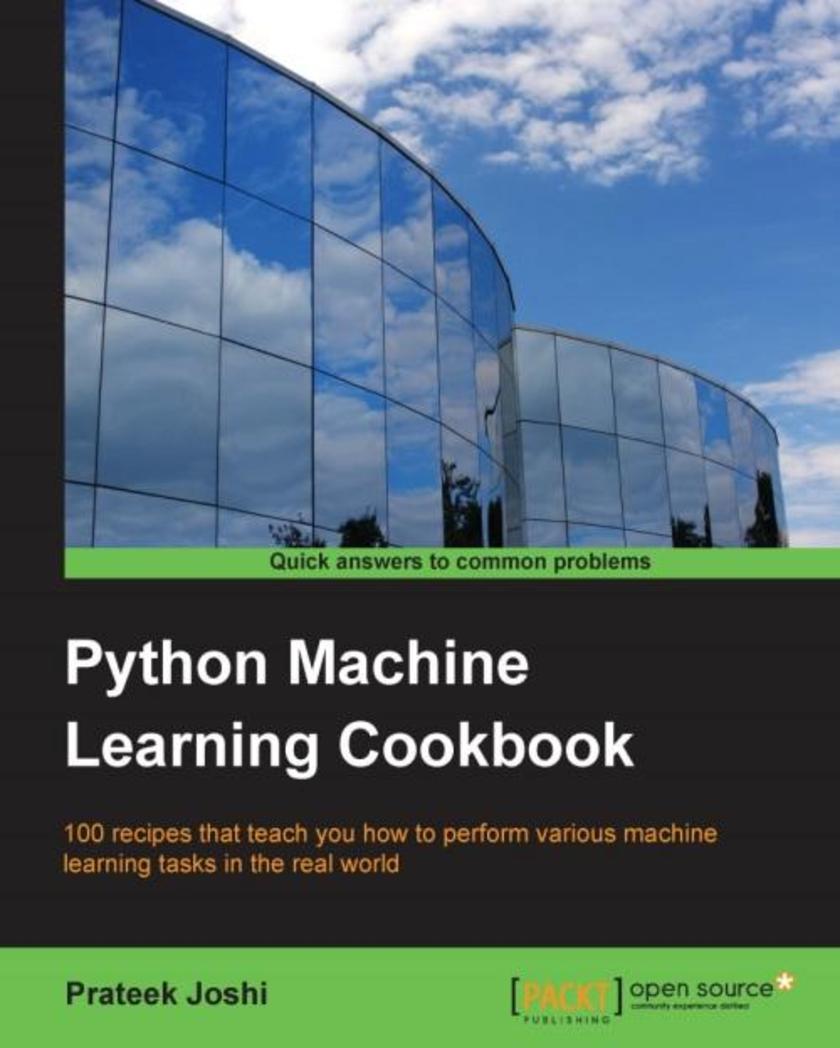
Python Machine Learning Cookbook
¥107.90
100 recipes that teach you how to perform various machine learning tasks in the real world About This Book Understand which algorithms to use in a given context with the help of this exciting recipe-based guide Learn about perceptrons and see how they are used to build neural networks Stuck while making sense of images, text, speech, and real estateThis guide will come to your rescue, showing you how to perform machine learning for each one of these using various techniques Who This Book Is For This book is for Python programmers who are looking to use machine-learning algorithms to create real-world applications. This book is friendly to Python beginners, but familiarity with Python programming would certainly be useful to play around with the code. What You Will Learn Explore classification algorithms and apply them to the income bracket estimation problem Use predictive modeling and apply it to real-world problems Understand how to perform market segmentation using unsupervised learning Explore data visualization techniques to interact with your data in diverse ways Find out how to build a recommendation engine Understand how to interact with text data and build models to analyze it Work with speech data and recognize spoken words using Hidden Markov Models Analyze stock market data using Conditional Random Fields Work with image data and build systems for image recognition and biometric face recognition Grasp how to use deep neural networks to build an optical character recognition system In Detail Machine learning is becoming increasingly pervasive in the modern data-driven world. It is used extensively across many fields such as search engines, robotics, self-driving cars, and more. With this book, you will learn how to perform various machine learning tasks in different environments. We’ll start by exploring a range of real-life scenarios where machine learning can be used, and look at various building blocks. Throughout the book, you’ll use a wide variety of machine learning algorithms to solve real-world problems and use Python to implement these algorithms. You’ll discover how to deal with various types of data and explore the differences between machine learning paradigms such as supervised and unsupervised learning. We also cover a range of regression techniques, classification algorithms, predictive modeling, data visualization techniques, recommendation engines, and more with the help of real-world examples. Style and approach You will explore various real-life scenarios in this book where machine learning can be used, and learn about different building blocks of machine learning using independent recipes in the book.

Learning Node.js for .NET Developers
¥54.49
Solve practical real-world problems using JavaScript and Node.js About This Book Learn the concepts of Node.js to gain a high-level understanding of the Node.js execution model Build an interactive web application with MongoDB and Redis and create your own JavaScript modules that work both on the client side and server side Familiarize yourself with the new features of Node.js and JavaScript with this exclusive step-by-step guide Who This Book Is For This book is for developers who want to learn JavaScript and Node.js. Previous experience with programming is desired, but no JavaScript or Node.js knowledge is required. The book focuses mostly on web development, such as networking, serving dynamic pages, and real-time client-server communication. What You Will Learn Understand which problems Node.js best solves Write idiomatic JavaScript and Node.js code Build web applications and command-line tools Minimise complexity and efficiently solve difficult problems Test and deploy Node.js applications Work with persistent data Implement real-time client-server applications Integrate .NET and Node.js code In Detail Node.js is an open source, cross-platform runtime environment that allows you to use JavaScript to develop server-side web applications. This short guide will help you develop applications using JavaScript and Node.js, leverage your existing programming skills from .NET or Java, and make the most of these other platforms through understanding the Node.js programming model. You will learn how to build web applications and APIs in Node, discover packages in the Node.js ecosystem, test and deploy your Node.js code, and more. Finally, you will discover how to integrate Node.js and .NET code. Style and approach This is a step-by-step and practical guide to Node.js for .Net developers. It covers the fundamentals relating to typical applications. The focus is on providing the practical skills required to develop applications, with a summary of the key concepts covered.

Effective Python Penetration Testing
¥71.93
Pen test your system like a pro and overcome vulnerabilities by leveraging Python *s, libraries, and tools About This Book Learn to utilize your Python *ing skills to pentest a computer system, network, and web-application Get proficient at the art of assessing vulnerabilities by conducting effective penetration testing This is the ultimate guide that teaches you how to use Python to protect your systems against sophisticated cyber attacks Who This Book Is For This book is ideal for those who are comfortable with Python or a similar language and need no help with basic programming concepts, but want to understand the basics of penetration testing and the problems pentesters face. What You Will Learn Write Scapy *s to investigate network traffic Get to know application fingerprinting techniques with Python Understand the attack *ing techniques Write fuzzing tools with pentesting requirements Learn basic attack *ing methods Utilize cryptographic toolkits in Python Automate pentesting with Python tools and libraries In Detail Penetration testing is a practice of testing a computer system, network, or web application to find weaknesses in security that an attacker can exploit. Effective Python Penetration Testing will help you utilize your Python *ing skills to safeguard your networks from cyberattacks. We will begin by providing you with an overview of Python *ing and penetration testing. You will learn to analyze network traffic by writing Scapy *s and will see how to fingerprint web applications with Python libraries such as ProxMon and Spynner. Moving on, you will find out how to write basic attack *s, and will develop debugging and reverse engineering skills with Python libraries. Toward the end of the book, you will discover how to utilize cryptography toolkits in Python and how to automate Python tools and libraries. Style and approach This is an expert’s guide to Python with a practical based approach, where each chapter will help you improve your penetration testing skills using Python to become a master pen tester.




 购物车
购物车 个人中心
个人中心



